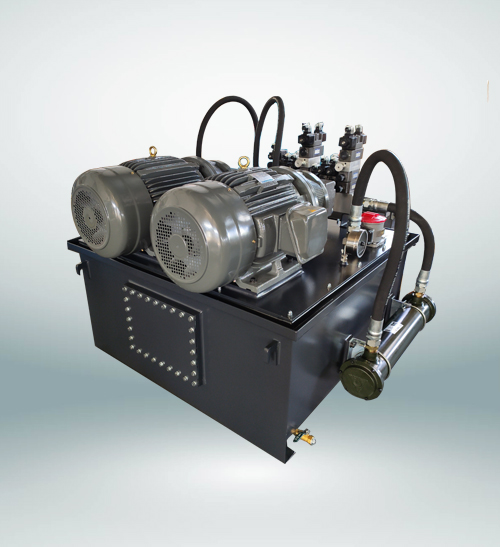
A complete hydraulic power unit is composed of five parts, namely power components, actuating components, control components, components and hydraulic oil.
The role of power components is to convert the mechanical energy of the prime mover into the pressure energy of the liquid. It refers to the oil pump in the hydraulic system, which provides power to the entire hydraulic system. The structure of hydraulic pump station generally includes gear pump, vane pump and plunger pump. The function of actuating elements (such as hydraulic cylinder and hydraulic motor) is to convert the pressure energy of liquid into mechanical energy and drive the load to perform linear reciprocating or rotary motion.

Control elements (i.e. various hydraulic valves) control and adjust the pressure, flow and direction of liquid in the hydraulic system. According to the different control functions, the hydraulic valve can be divided into pressure control valve, flow control valve and direction control valve. The pressure control valve is divided into profit flow valve (safety valve), pressure reducing valve, sequence valve, pressure relay, etc; Flow control valve includes throttle valve, regulating valve, diversion and collection valve, etc; The direction control valve includes check valve, hydraulic control check valve, shuttle valve, reversing valve, etc. According to different control modes, hydraulic valves can be divided into switch type control valves, fixed value control valves and proportional control valves.
Auxiliary components include oil tank, oil filter, oil pipe and pipe joint, sealing ring, pressure gauge, oil level and oil temperature gauge, etc.
Hydraulic oil is the working medium of energy transfer in hydraulic system, which includes various mineral oils, emulsions and synthetic hydraulic oils.